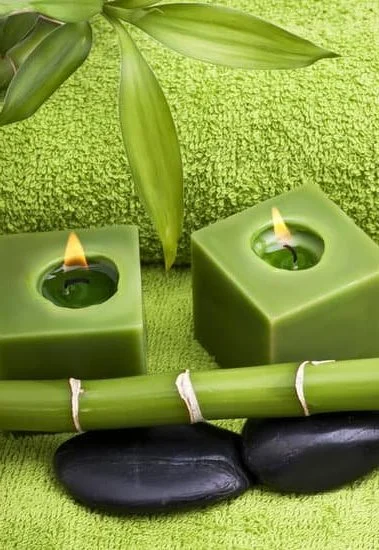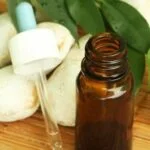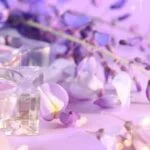Aromatherapy massage is a unique blend of therapeutic massage techniques and the use of essential oils derived from plants. In this introductory section, we will delve into the soothing world of aromatherapy massage, exploring its benefits, techniques, and origins. Whether you are seeking relaxation, stress relief, or a boost to your overall well-being, aromatherapy massage offers a holistic approach to healing that goes beyond just physical touch.
The power of scents has long been recognized for their ability to affect our mood and emotions. In aromatherapy massage, these scents are harnessed through the use of essential oils that are carefully selected for their specific properties. The combination of skilled massage techniques and the inhalation or absorption of these aromatic oils creates a deeply relaxing and rejuvenating experience.
But how does aromatherapy massage actually work? This is where science comes into play. By stimulating specific nerve endings in the skin, muscles, and tissues, the therapeutic touch of the masseuse triggers a range of physiological responses in the body. Coupled with the olfactory stimulation from essential oils, this treatment can enhance blood circulation, reduce muscular tension, promote lymphatic drainage, and even improve sleep patterns. Soothing both mind and body, aromatherapy massage is a truly holistic approach to wellness.
In the next sections of this article series on aromatherapy massage, we will dive deeper into understanding its origins and unique techniques. We will also explore the healing effects that go beyond relaxation and uncover how to choose the perfect blend of essential oils for your individual needs.
Additionally, we will provide practical guidance on how to prepare for an aromatherapy massage session step-by-step and answer frequently asked questions about this popular form of therapy. Lastly, we will take a look at trends and innovations within the field to get a glimpse into what the future holds for aromatherapy massage.
Join us on this journey as we explore all facets of the soothing world of aromatherapy massage and discover how this ancient practice can bring balance to our modern lives.
Unpacking Aromatherapy
Aromatherapy is a holistic therapeutic practice that utilizes essential oils to enhance physical, emotional, and mental well-being. The power of aromatherapy lies in the scents of these essential oils, which can have profound effects on our senses and overall health. By understanding the power of scents, we can better appreciate the benefits of aromatherapy massage.
Scents have a unique way of evoking memories, emotions, and sensations. They can transport us to different times and places, triggering feelings of nostalgia or relaxation. This is because scent molecules are processed by the olfactory system in our brain, which is directly connected to the limbic system responsible for emotions and memory.
In aromatherapy massage, specific essential oils are chosen for their aromatic properties and therapeutic benefits. These oils are derived from various parts of plants such as flowers, leaves, bark, and roots through methods like distillation or cold pressing. Each oil has its own unique chemical composition that contributes to its distinct scent and healing properties.
To fully understand the power of scents in aromatherapy massage, it is important to explore some popular essential oils used in this practice:
- Lavender: Known for its calming and relaxing properties, lavender oil promotes sleep and reduces anxiety.
- Peppermint: With a refreshing and invigorating scent, peppermint oil can help relieve headaches and improve mental clarity.
- Eucalyptus: This oil has a cooling aroma that can clear nasal congestion and ease respiratory issues.
- Chamomile: A soothing scent commonly associated with relaxation, chamomile oil can be used to calm nerves and reduce stress.
By harnessing the power of these scents through aromatherapy massage techniques, practitioners aim to promote balance within the body while providing a deeply relaxing experience for the recipient. Whether you seek stress relief or want to address specific health concerns, aromatherapy massage offers a gentle yet effective approach with an emphasis on the power of scents.
The Science Behind Aromatherapy Massage
Aromatherapy massage is a therapeutic practice that combines the soothing power of touch with the aromatic properties of essential oils. But how exactly does it work? In this section, we will delve into the science behind aromatherapy massage and explore the mechanisms through which it produces its beneficial effects.
One key aspect of aromatherapy massage is the inhalation of aromatic molecules from essential oils. When inhaled, these molecules travel to the olfactory system, which is responsible for our sense of smell. The olfactory system is connected to other parts of the brain, including the limbic system, which plays a role in emotions and memory.
As a result, inhaling certain scents can have a direct impact on our mood and overall emotional well-being. Aromatherapy massage harnesses this connection by using specific essential oils known for their relaxing or uplifting properties.
In addition to inhalation, aromatherapy massage involves the topical application of essential oils onto the skin. When applied during a massage, these oils are absorbed through the skin and enter into the bloodstream. From there, they can be carried to different organs and tissues throughout the body.
Each essential oil has its own unique chemical composition, which gives it specific therapeutic properties. For example, lavender essential oil is known for its calming and anti-inflammatory effects, while peppermint essential oil has stimulating and analgesic properties.
To enhance the efficacy of aromatherapy massage, different techniques are employed to promote relaxation and relieve tension in muscles. This includes various forms of stroking, kneading, and pressure applied during a massage session. By combining these manual techniques with carefully selected essential oils, aromatherapy massage creates a holistic experience that targets both physical relaxation and mental well-being.
In summary, aromatherapy massage works through two main mechanisms: inhalation of aromatic molecules that affect emotions and memory via the olfactory system; and topical application of essential oils that are absorbed into the bloodstream and exert their therapeutic effects throughout the body. This unique combination of scent and touch creates a deeply relaxing and rejuvenating experience that goes beyond traditional massage therapy.
Now that we understand the science behind aromatherapy massage, let’s take a deeper look into its ancient origins and how it has evolved over time.
Delving into the Ancient Origins of Aromatherapy Massage
The practice of aromatherapy massage has a long and rich history that dates back thousands of years. The ancient origins of this therapeutic technique can be traced to various ancient civilizations, including Egypt, China, India, and Greece. In these cultures, aromatherapy was used not only for relaxation and pleasure but also for its medicinal properties.
Ancient Egyptian Origins
One of the earliest documented uses of aromatherapy massage can be found in ancient Egypt. The Egyptians were known for their advanced understanding of essential oils and their healing properties. They believed that fragrant oils could bring balance to the body and promote overall well-being. Aromatherapy massage was often used in combination with other techniques such as herbal medicine and sound therapy.
Ancient Chinese Influences
In China, aromatherapy massage was part of traditional Chinese medicine practices. It was believed that specific scents could stimulate certain organs or meridians in the body, helping to restore balance and promote healing. Chinese physicians would prescribe aromatic oils to be used during massage treatments as a way to address specific health concerns.
Ayurvedic Heritage in India
Ayurveda, the traditional system of medicine in India, also incorporated aromatherapy into its practices. Aromatherapy massage, known as Abhyanga, is an integral part of Ayurvedic treatments for balancing the doshas (energies) within the body. Specific blends of essential oils are chosen based on an individual’s unique constitution to bring harmony and vitality.
Greek Influence on Modern Aromatherapy
The Greeks were well-known for their love of luxurious baths scented with aromatic oils. They believed strongly in the power of fragrance to enhance physical and emotional well-being. The Greek physician Hippocrates, often referred to as the father of modern medicine, recognized the therapeutic benefits of essential oils and used them in his treatments.
What Sets Aromatherapy Massage Apart
Aromatherapy massage is a unique form of massage therapy that combines the power of touch with the therapeutic benefits of essential oils. Unlike traditional massage techniques, aromatherapy massage focuses on not only relaxing the body but also utilizing specific essential oils to address various physical and emotional concerns. In this section, we will explore the unique techniques used in aromatherapy massage.
Customized Blends
One of the key aspects that sets aromatherapy massage apart from other forms of massage is the use of customized essential oil blends. A skilled aromatherapist will carefully select and combine essential oils based on the individual client’s needs and preferences.
These blends can vary depending on factors such as desired outcomes, physical conditions, emotional states, and even personal scent preferences. The careful selection of specific oils allows for a tailored and personalized experience that enhances the therapeutic effects of the massage.
Aromatic Inhalation
Another technique commonly used in aromatherapy massage is aromatic inhalation. This involves the client inhaling the aroma of selected essential oils either directly or through a diffuser during different stages of the massage.
Inhalation allows for a direct interaction between the molecules in the essential oil and the olfactory receptors in our nose, which can have profound effects on our mood, emotions, and overall well-being. By incorporating aromatic inhalation into an aromatherapy massage session, therapists can further enhance relaxation and promote emotional balance.
Acupressure Points
In addition to traditional massage techniques such as kneading, stroking, and friction, aromatherapy massage often incorporates acupressure points targeting specific areas of tension or energy blockages in the body. Acupressure is an ancient healing art that involves applying pressure to certain points along energy pathways known as meridians. By combining acupressure with aromatherapy, therapists can effectively release tension and restore the body’s natural flow of energy.
Benefits Beyond Relaxation
Aromatherapy massage is not only a relaxing experience but also offers various healing effects for the mind, body, and spirit. This section will explore the different ways in which aromatherapy massage can provide therapeutic benefits beyond relaxation.
One of the key healing effects of aromatherapy massage is its ability to reduce stress and anxiety. The combination of soothing massage techniques and aromatherapy oils can promote deep relaxation and help calm the nervous system. Research has shown that specific essential oils used in aromatherapy massage, such as lavender, chamomile, and bergamot, have properties that can alleviate stress and anxiety symptoms.
Another healing effect of aromatherapy massage is pain relief. Certain essential oils used in the massage can have analgesic properties that help reduce pain and inflammation in the body. For example, peppermint oil has been found to be effective in relieving muscle soreness and tension headaches when applied during a massage.
Aromatherapy massage can also improve sleep quality. Many people struggle with sleep-related issues such as insomnia or restless sleep. The calming scents used in aromatherapy, combined with the soothing touch of the massage, can help promote better sleep by reducing anxiety and creating a sense of relaxation.
In summary, while aromatherapy massage is known for its relaxation benefits, it also offers numerous healing effects. From reducing stress and anxiety to providing pain relief and improving sleep quality, aromatherapy massage has holistic benefits for overall well-being.
| Healing Effects | Examples |
|---|---|
| Reduces stress and anxiety | Lavender oil calms the nervous system |
| Provides pain relief | Peppermint oil relieves muscle soreness |
| Improves sleep quality | Chamomile oil promotes better sleep |
Aromatherapy Massage Oils
Aromatherapy massage oils play a crucial role in enhancing the overall experience and benefits of an aromatherapy massage. These carefully crafted blends of essential oils and carrier oils are designed to heighten relaxation, promote well-being, and address specific health concerns. With a wide range of options available, it is important to understand how to choose the perfect blend for your unique needs.
When selecting aromatherapy massage oils, it is important to consider your desired outcome or goal. Different essential oils have various therapeutic properties that can address specific conditions or concerns. For example, lavender oil is known for its calming and soothing effects, making it ideal for relaxation and stress relief. On the other hand, peppermint oil has invigorating properties that can help alleviate headaches or muscle soreness.
It is also worth noting that carrier oils are used to dilute essential oils before applying them to the skin during a massage. Commonly used carrier oils include almond oil, coconut oil, and jojoba oil. These carrier oils not only serve as a medium for applying the essential oils but also provide their own nourishing and moisturizing benefits.
To choose the perfect blend for your needs, consider consulting with a certified aromatherapist or massage therapist who specializes in aromatherapy. They can assess your individual needs and preferences and recommend a customized blend of essential oils and carrier oils that will best support your goals.
In summary, choosing the right aromatherapy massage oil blend involves considering your desired outcome, understanding the therapeutic properties of different essential oils, and selecting an appropriate carrier oil. By seeking professional advice from experts in the field, you can ensure that you are using a blend that suits your unique needs and preferences.
| Aromatherapy Massage Oils | Therapeutic Properties |
|---|---|
| Lavender Oil | Calming, soothing, stress relief |
| Peppermint Oil | Invigorating, alleviates headaches and muscle soreness |
| Eucalyptus Oil | Cleansing, respiratory support |
| Chamomile Oil | Anti-inflammatory, sleep aid |
| Citrus Oil (Orange, Lemon) | Energizing, uplifting, mood enhancement |
How to Prepare for an Aromatherapy Massage
Preparing for an aromatherapy massage is an essential step in maximizing the benefits and overall experience of this therapeutic practice. By taking a few simple steps beforehand, you can ensure that you are ready to fully relax and indulge in the soothing world of aromatherapy. This section will provide a step-by-step guide on how to prepare for an aromatherapy massage.
Step 1: Choose the Right Therapist
The first step in preparing for an aromatherapy massage is to find a qualified therapist who specializes in this type of treatment. Look for therapists who have received certifications or training in aromatherapy techniques from reputable organizations. Additionally, read reviews or ask for recommendations to find someone with a proven track record of providing excellent massages.
Step 2: Communicate Your Needs and Preferences
Before your appointment, take some time to consider your needs and preferences for the aromatherapy massage. Reflect on any specific physical or emotional concerns you would like addressed during the session. For example, if you struggle with anxiety or stress, you may want to request calming essential oils such as lavender or chamomile. Communicating your needs and preferences with your therapist will help them tailor the experience to meet your specific requirements.
Step 3: Hydrate and Take Care of Your Body
Proper hydration before a massage is crucial as it helps improve circulation and prepares the muscles for manipulation. Drink plenty of water throughout the day leading up to your appointment. Additionally, avoid heavy meals immediately before the session as a full stomach may cause discomfort during the massage. Taking care of your body by getting enough sleep, stretching, and practicing deep breathing exercises can also enhance the efficacy of the treatment.
By following these simple steps, you can ensure that you make the most out of your aromatherapy massage experience. Proper preparation sets a solid foundation for relaxation and healing, allowing you to reap the numerous benefits that this ancient therapy has to offer.
Frequently Asked Questions About Aromatherapy Massage
Aromatherapy massage is a popular form of alternative medicine that combines the benefits of massage therapy with the use of essential oils. As with any holistic practice, it’s natural to have questions about how aromatherapy massage works and what to expect. In this section, we will address some frequently asked questions about aromatherapy massage.
- What exactly is aromatherapy massage?
- What are the benefits of aromatherapy massage?
- Are there any precautions or contraindications for aromatherapy massage?
Aromatherapy massage involves the use of essential oils derived from plants to enhance the therapeutic effects of a massage. These highly concentrated oils are added to a carrier oil and then applied to the skin during the massage. The therapist may also use techniques such as Swedish or deep tissue massage to target specific areas of tension or promote overall relaxation.
Aromatherapy massage offers numerous benefits for both physical and mental well-being. The combination of essential oils and massage can help reduce stress, relieve muscle tension, improve circulation, and promote relaxation. Different oils have different properties, so they can be chosen based on individual needs or preferences.
While generally safe for most people, there are certain precautions to consider before getting an aromatherapy massage. It’s important to inform your therapist if you have any allergies, sensitivities, or medical conditions that may affect your ability to tolerate certain oils or techniques.
Pregnant women should also consult their healthcare provider before receiving an aromatherapy massage due to potential risks associated with certain essential oils. Additionally, individuals with open wounds or contagious skin conditions should avoid getting a massage until they have healed.
By addressing these frequently asked questions about aromatherapy massage, individuals can feel more informed and confident in exploring this therapeutic practice. As always, it is recommended to consult with a qualified aromatherapist or healthcare professional to ensure that this form of treatment aligns with your personal health needs and goals.
The Future of Aromatherapy Massage
As aromatherapy massage continues to gain popularity and recognition for its numerous benefits, the future of this holistic practice looks promising. With a growing interest in natural healing methods and alternative therapies, it is safe to say that aromatherapy massage will continue to evolve and adapt to meet the needs of individuals seeking wellness and relaxation. In this section, we will explore some of the trends and innovations that are shaping the future of aromatherapy massage.
One notable trend in aromatherapy massage is the incorporation of technology. As technology continues to advance, practitioners are finding innovative ways to enhance the therapeutic experience. For example, there are now specialized devices that can diffuse essential oils during a massage session, creating a more immersive and potent aromatherapy experience.
Additionally, virtual reality (VR) has been introduced into some spa settings, allowing clients to immerse themselves in serene environments while receiving their massage. These technological advancements not only enhance the overall experience for clients but also provide new opportunities for practitioners to customize their treatments.
Another trend in aromatherapy massage is the focus on personalized blends and tailored treatments. Gone are the days of generic scents and one-size-fits-all massages. Practitioners are now paying close attention to each client’s unique needs and preferences when selecting essential oils and designing massage techniques. This level of personalization ensures that clients receive a truly individualized experience that meets their specific goals or concerns.
Furthermore, there is an increasing emphasis on research and evidence-based practice within the field of aromatherapy massage. As more studies demonstrate the positive effects of aromatherapy on various conditions such as stress, anxiety, and pain management, practitioners are integrating this knowledge into their treatments. This evidence-based approach not only helps build credibility for aromatherapy massage but also encourages further exploration into its therapeutic potential.
In conclusion, as we navigate towards a future focused on holistic wellness, it is clear that aromatherapy massage will continue to play a significant role. With advancements in technology, personalized treatments, and a growing body of research, the field of aromatherapy massage is evolving to meet the changing needs of individuals seeking relaxation and healing.
So whether you’re looking for a tranquil escape from the stresses of daily life or searching for a natural alternative to traditional medicine, aromatherapy massage offers a soothing and promising path towards wellness.
Frequently Asked Questions
What does a full body aromatherapy massage include?
A full body aromatherapy massage is a holistic massage technique that incorporates the use of essential oils derived from plants to enhance the overall massage experience. This type of massage includes a therapist using various techniques to target different areas of the body, working on the muscles and soft tissues to promote relaxation and relieve tension.
In addition to traditional massage techniques, the therapist will incorporate the use of scented essential oils that have been specifically chosen for their therapeutic properties, such as lavender for relaxation or peppermint for rejuvenation. The essential oils are either applied directly to the skin or diffused in the air during the massage, allowing their aroma to be inhaled and absorbed into the body.
What is the difference between massage and aromatherapy massage?
The main difference between a regular massage and an aromatherapy massage lies in the use of essential oils. While both types involve manipulating muscles and soft tissues to promote healing and relaxation, an aromatherapy massage uses scented essential oils as an additional component for therapeutic benefits.
These essential oils can enhance various aspects of the massage experience, such as providing stress relief, reducing anxiety, easing muscle tension, or enhancing mood. Regular massages typically focus solely on physical manipulations of tissue without incorporating any aromatic elements.
What happens during aromatherapy massage?
During an aromatherapy massage, a client will first have a consultation with a trained therapist who will assess their needs and preferences before choosing specific essential oils for their treatment. The client may be asked about their general health history and current concerns to ensure appropriate oil selection and avoid any potential allergies or sensitivities. Once selected, these essential oils are then incorporated into the actual massage session through methods like topical application or diffusion into the air.
As the therapist performs various massage techniques on different parts of the body, they will apply diluted essential oil blends directly onto the skin or release them into the room with diffusers. This allows for both inhalation and absorption of these oils into the body, resulting in physical and emotional benefits during and after the massage. The therapist may also adjust the pressure and techniques based on the client’s preferences and needs, ensuring a personalized and effective treatment.

Are you looking for a natural way to improve your health and wellbeing?
If so, aromatherapy may be the answer for you.






